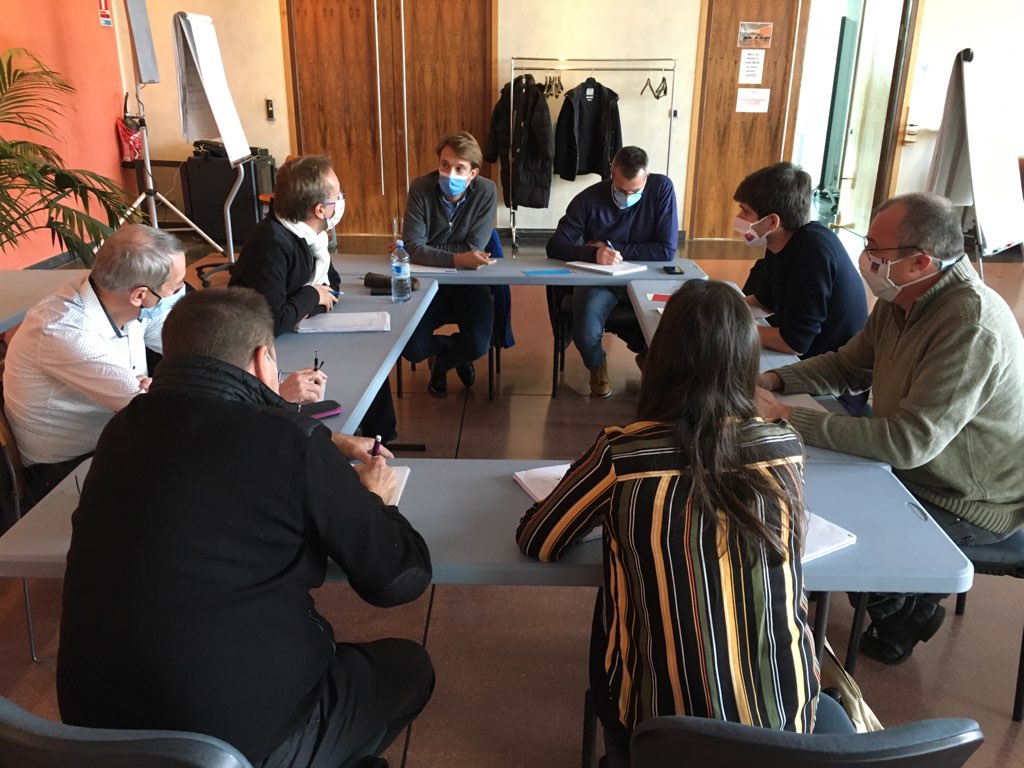The players in the industrial hemp bioeconomy are now ready to create a regional ecosystem with a European dimension that is structured and structured with the aim of developing the industry.
The ambition of the European Regional Hemp Biorefinery Cluster is clear: to become the European benchmark for the hemp economy by creating an innovative industrial ecosystem that facilitates market development. To build this biorefinery, the Collectif 3C Grand Est aims to bring together all the players and skills involved, from the field to finished products. It is supported by Troyes Champagne Métropole, the Grand Est Region and the European Union, via the European Agricultural Fund for Rural Development (EAFRD) and the European Partnership for Agricultural Innovation. And there is no shortage of finished products in markets as varied as construction, textiles, food, cosmetics, health, plastics and composites… So many markets to grow, so many players to unite.
Technical market groups initiate discussions to identify needs
The first step is to take stock of the situation, identify partners by market type and bring them together to compare points of view. You need to plan ahead, set objectives and think about the organisation needed to achieve them. This will be the DNA of the Hemp European Hub.
The Textile group’s first working session provided an opportunity for stakeholders to discuss their vision of the use of hemp resources in textiles. The players had to get together, talk to each other and decide to work together,” explains Estelle Delangle, project manager for the European Hemp Cluster. The aim was to clarify the objectives. The next step will be to remove the obstacles to facilitate development and industrial cooperation.
The Plastics and Composites group has worked on targeting players and sectors whose technological maturity makes it possible to envisage the use of hemp fibre in composite materials.
In some markets, such as construction, there are already a number of players involved in promoting hemp and bio-based materials,” adds Estelle Delangle. In this group, the challenge is above all to bring them together and get organised to meet demand and boost the industry”. All those involved – building owners, project managers and contractors – must work towards the common goal of widespread use of hemp, each at their own level: building construction, materials specification, installation, manufacturing processes, etc.
For the ‘Food, Cosmetics, Health’ technical group, the aim is to identify the active ingredients in hemp that should be promoted in their respective markets. The next step is to identify the technological, marketing and regulatory levers that can be used to promote the use of industrial hemp in products.
The heart of the hemp economy in Saint-Lyé
Essential to the industry, the technical group for the agricultural sector works on the production of hemp resources. It anticipates developments in production and harvesting techniques and in securing the supplies needed to supply the industry. All with the aim of achieving responsible environmental quality. These initial ideas will be supplemented by the needs expressed by the other technical groups. This is also the position of the Research, Innovation and Transfer technical group, which aims to pool R&D capacities for the different markets.
Finally, in a few weeks’ time, the ‘Bioeconomy’ group will bring together around 80 participants. Their aim: to design the circular economy schemes that will be used to shape the future hemp biorefinery at Saint-Lyé (10).
A veritable crossroads and ecosystem for the hemp industry, the Hemp European Hub brings together all current and future players in the sector. In addition, a ‘Setting up new businesses’ unit, run by Business Sud Champagne, complements the technical groups. The aim is to support companies wishing to set up in the region or develop projects involving industrial hemp.


